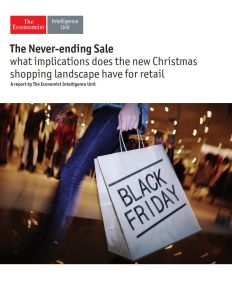Melden Sie sich bei getAbstract an, um die Zusammenfassung zu erhalten.

Melden Sie sich bei getAbstract an, um die Zusammenfassung zu erhalten.
The Economist Intelligence Unit
The Never-ending Sale
What Implications Does the New Christmas Shopping Landscape Have for Retail?
EIU, 2015
Was ist drin?
Once upon a time, shoppers flocked to sales only a few times per year. But now sales are almost constant. What does this mean for retailers?
Recommendation
Years ago, retailers conducted sales sporadically, usually around holidays. Lately, however, the word “sale” seems to have become permanently etched into store windows and on retail websites. According to this useful study from the Economist Intelligence Unit, e-commerce and the 2008 economic downturn have made consumers particularly bargain conscious, so retailers have to compete by offering perpetual price cuts in what has become a truly global marketplace. getAbstract recommends this insightful article to executives in the retail industry as well as to the securities analysts who cover it.
Summary
About the Author
The Economist Intelligence Unit is an independent research and analysis organization.






















































































































Comment on this summary